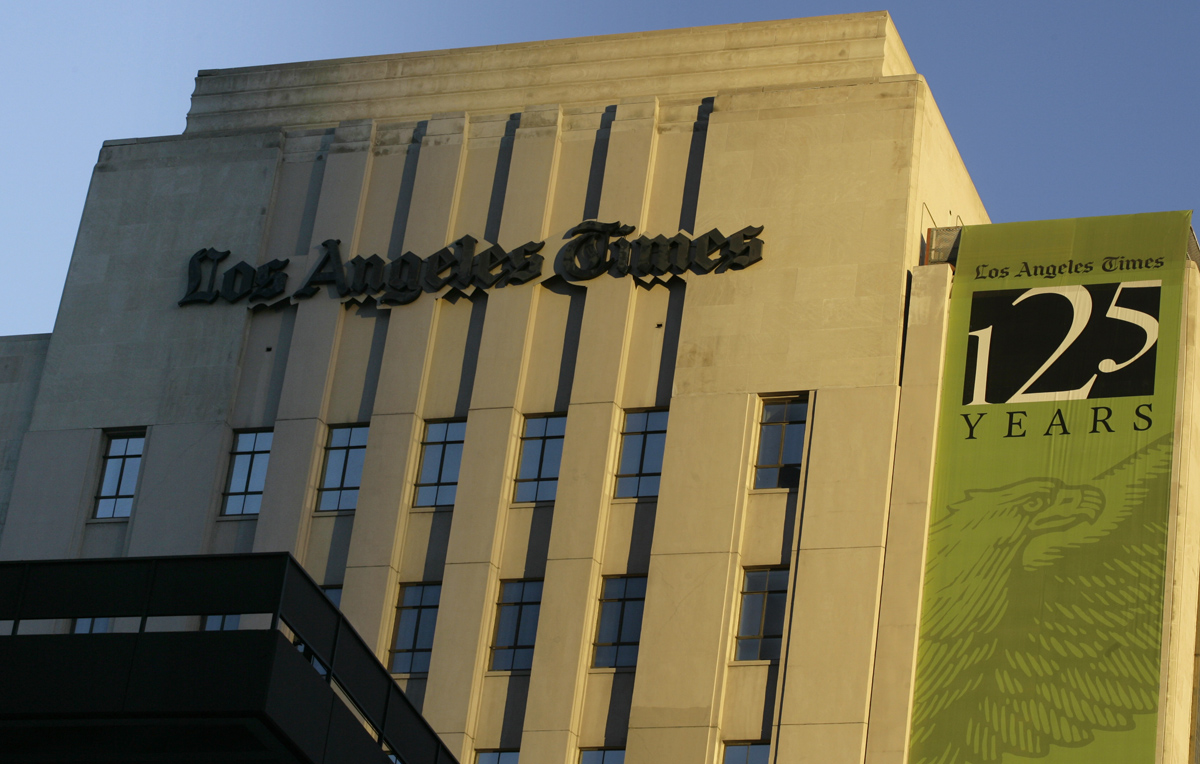The flurry of executive changes at Tribune Publishing and an earnings call with analysts Wednesday left a basic question unanswered: How and when does this translate into a new strategy for profitability?
From a strictly financial perspective, you could say Tribune buried the lead.
The company operated at break-even (a tiny loss actually) for both the fourth quarter of 2015 and the full year. Looking just at cash flow, it would have made money.
Not counting added growth from acquisition of the San Diego Union-Tribune, advertising revenues were down 8.7 percent compared to the period in 2014 — a typical result among regional publishing companies. Digital advertising revenue was down too. Circulation revenue was flat.
And in brief comments during the earnings call, new CEO Justin Dearborn was candid about a weak balance sheet. Tribune Publishing “is still active in the process” of bidding for the Orange County Register and other assets of bankrupt Freedom Communications, but “there is a price where we would walk away,” he said.
With only $80 million of cash on hand, Dearborn added, the company is not in a position to make a publishing acquisition any bigger than the Register. Peer companies like Gannett and New Media Investment Group, by contrast, have promised to buy more papers this year.
Chairman Michael Ferro did not join in the the call. And neither he nor Dearborn were made available for an interview on strategic next steps.
But one could find some hints:
- The company’s decision to make its top editors publishers is a break from the legacy model. Successful health care and tech execs Ferro and Dearborn seem to think that a separate job to oversee finances, advertising sales, circulation and community outreach is obsolete. They describe the new approach as “content-first,” though it is not clear whether newsroom headcounts will go up or down. Together with shedding former CEO Jack Griffin’s retro New York-based executive team, this seems like an equal and opposite reaction to Griffin’s pursuit of a big national advertising base targeting Tribune’s markets.Los Angeles Times Publisher Tim Ryan and Chicago Tribune Publisher Tony Hunter got new corporate jobs. But, as best I can tell, the other regional paper publishers are gone (though a couple of slots were already open because of retirements).
Take this as a fast sweeping the decks of a business and advertising approach that wasn’t delivering results. More details are undoubtedly forthcoming.
- A new player to watch is Malcolm CasSelle, who joined the company just last month, and has been named President of New Ventures. In his LinkedIn profile, CasSelle, 45, describes himself as a serial entrepreneur. He has computer science degrees from M.I.T. and Stanford, speaks Mandarin, and his work experience includes stints introducing Groupons to China and as CEO of startups MediaPass and Timeline Labs.
Dearborn told the analysts that Tribune Publishing will be “reclaiming (its) data” on users, in part by dropping third-party tracking from its digital sites. So expect another foray into big data — a high potential, low-yield venture to date for newspaper organizations.
- The company also announced that it plans a relaunch of LA.com as a “global…content vertical.” What kind of content would that be?The LA.com “coming soon” preview site, with bows to former Spice Girl Mel B., is branded as “A State of Mind” and is illustrated with big photos of millennials skateboarding, shooting selfies and bouncing along a dirt road in an open Jeep. I’m not sure that the world is clamoring for another content site, this one playing off L.A. Times and other Tribune content. But by looking West across the Pacific, at least the idea is different from the abundance of East Coast and British-based digital news ventures.
Today’s announcements suggests that my speculation last week that Tribune might consider selling its newspapers off individually was all wrong. At least for now.
Ferro and Dearborn will get latitude to fill in the many blanks and show the growth and earnings potential of their way. Should that not pan out, it will be time for Plan C.
Wall Street liked what it heard — Tribune Publishing shares were trading up 8.1 percent for the day.







